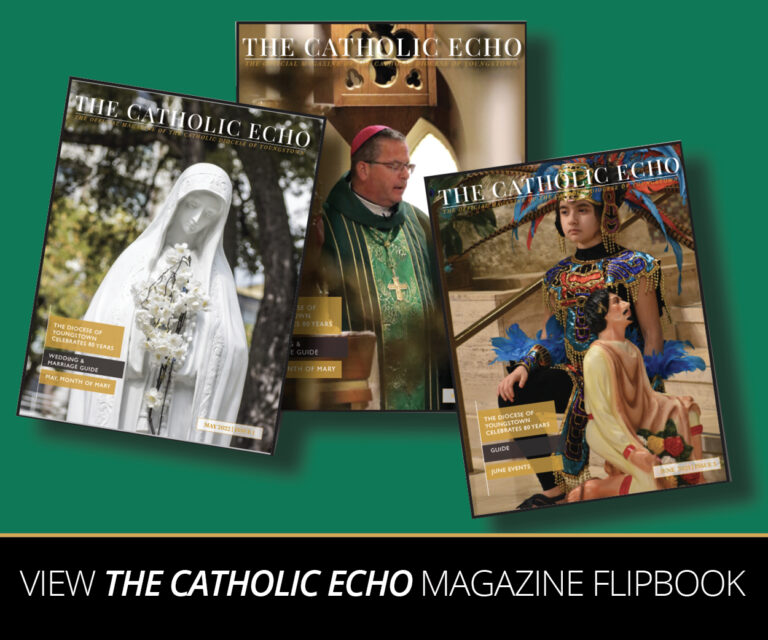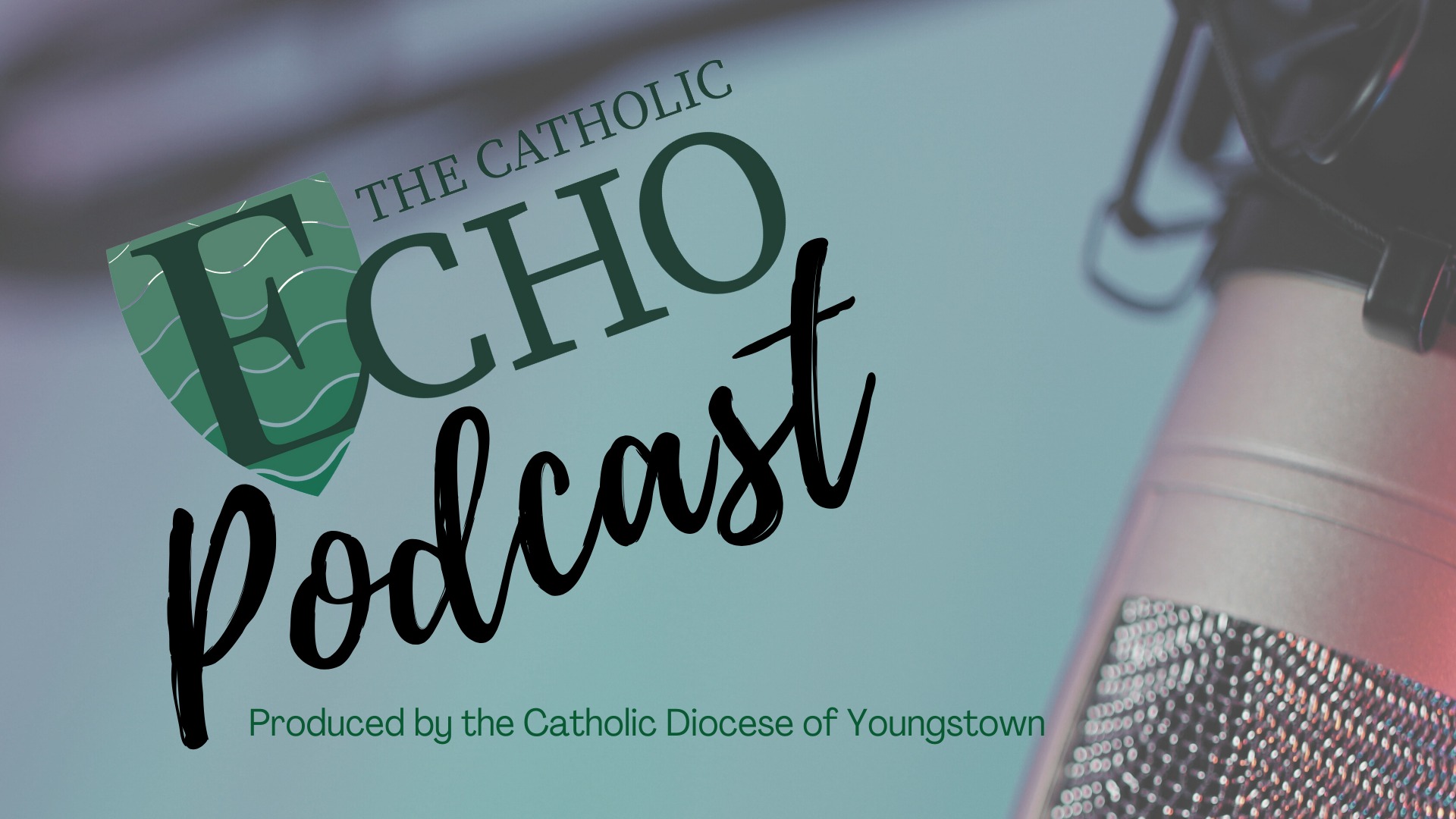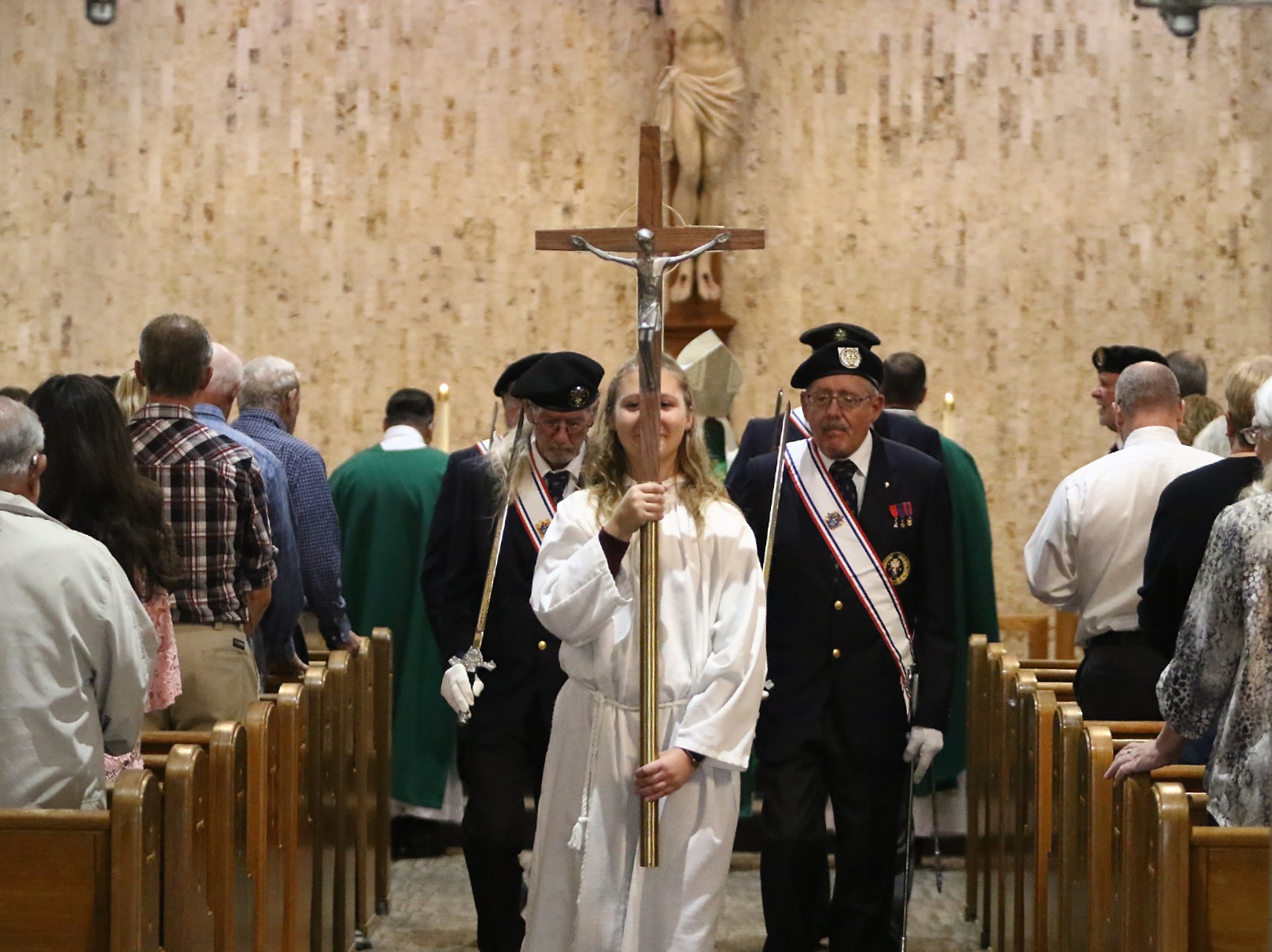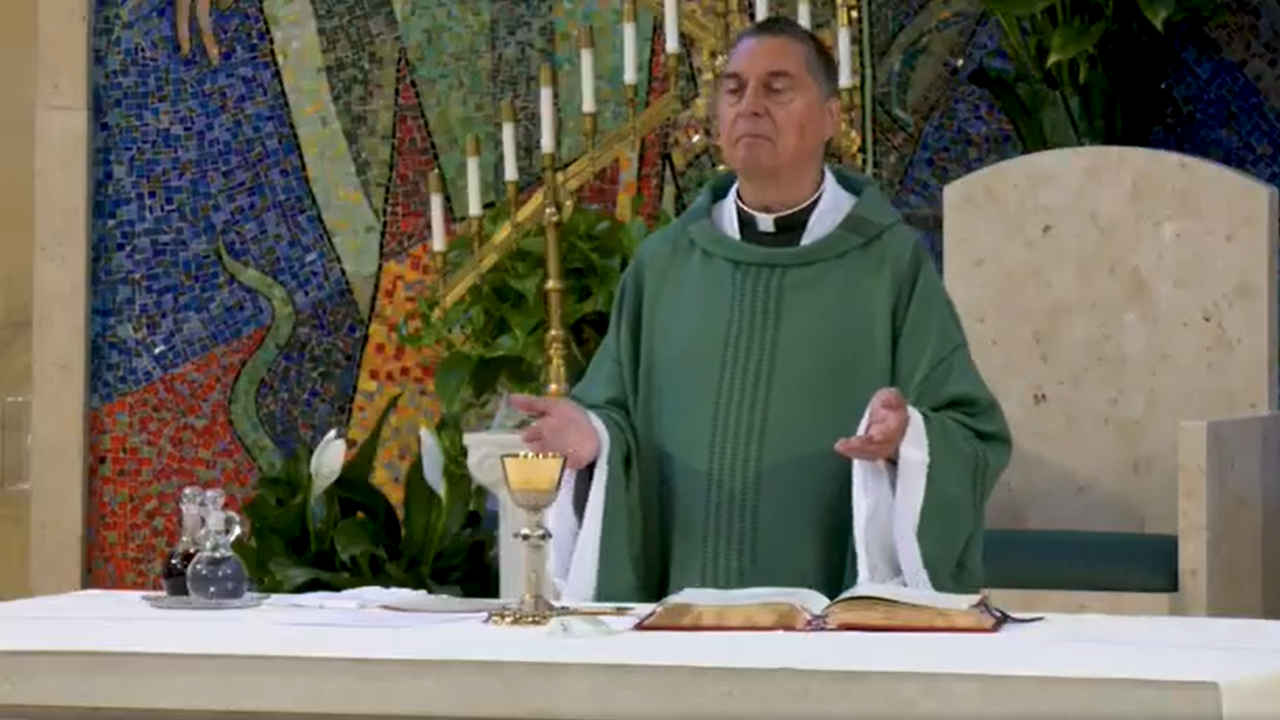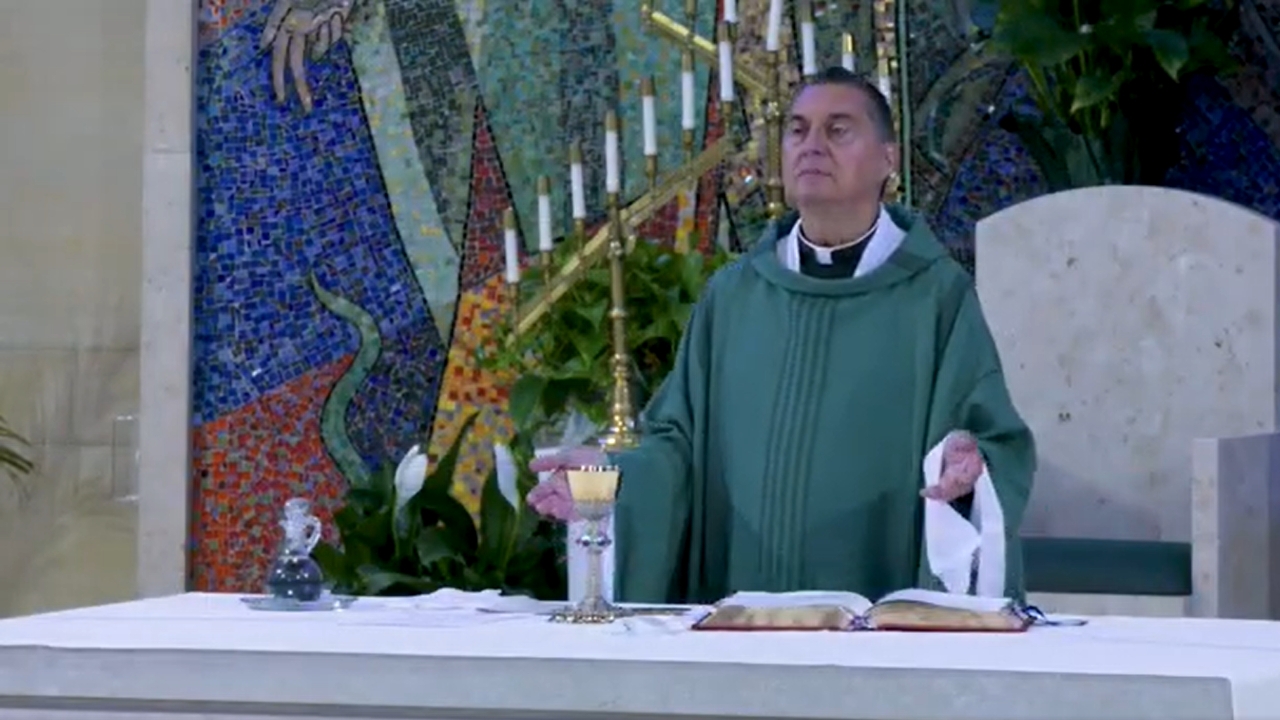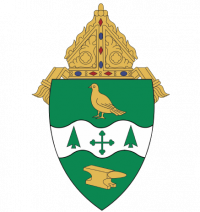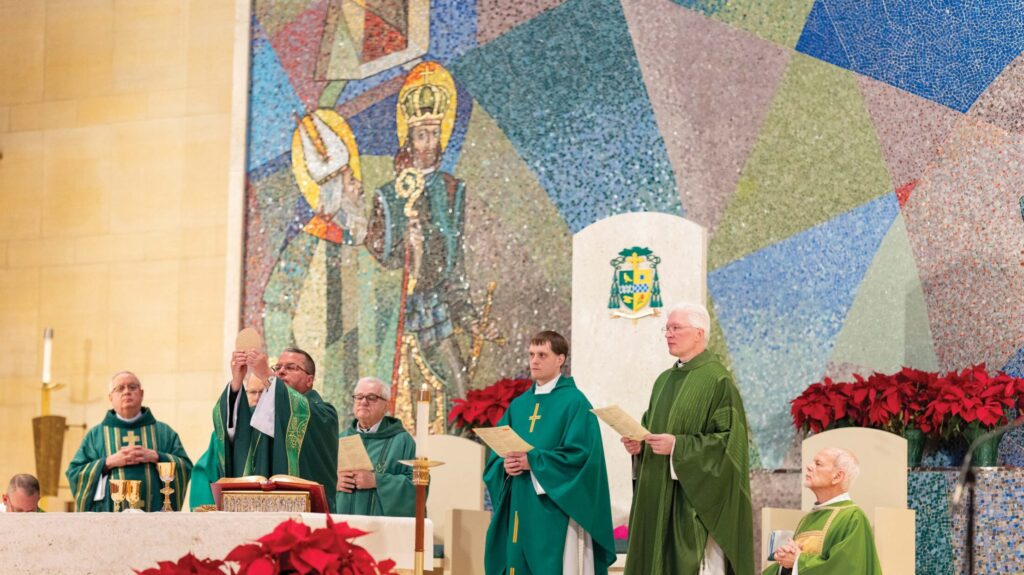
The word “cathedral” is derived from the Latin word “cathedra,” which is used to refer to the chair of a bishop in his church. As such, cathedrals are buildings that contain a cathedra—the physical seat of a bishop—designating them as the center of a bishop’s see or diocese—his ecclesiastical jurisdiction.
St. Columba Cathedral, which became the Diocese of Youngstown’s cathedral when the diocese was established in 1943, is a striking Romanesque structure made of materials that were once the industrial backbone of the Mahoning Valley—stone, steel and glass. The parish of St. Columba, which was founded in 1847, has worshipped in four different church buildings through the decades—the St. Columba Cathedral of today was dedicated in 1958, after a fire destroyed the previous structure.
It was—and still is—a triumph of modern church architecture, and the parish’s recent reconstruction efforts, which began in 2023 as part of the diocese’s 80th anniversary celebrations, ensure that the cathedral continues to meet the highest standards of aesthetics and liturgical function today.
Contained in this story are photos and descriptions detailing this recent project, which focused primarily on the cathedra, altar, mosaic and other significant features in the cathedral’s sanctuary. Monsignor Robert Siffrin, rector of St. Columba Cathedral, oversaw the cathedral renovations, working with a committee of laity, religious and clergy, including Father Michael Balash, diocesan vicar for clergy and director of the diocesan Office of Worship, and Father John-Michael Lavelle, diocesan vicar for missionary discipleship. Mark Cousineau of Henninger’s, Inc.—a Cleveland-based religious goods and liturgical design company—was the liturgical design consultant for the project.
To learn more about the St. Columba Cathedral renovation project—including video and podcast content—visit www.catholicecho.org.
THE CATHEDRA

Modern standards for the cathedra call for it to be larger and more pronounced than other seats in the sanctuary. It is also customary to feature the Coat of Arms of the current bishop of the diocese on the cathedra. Using marble from the former side altars, a new cathedra was constructed to meet today’s standards—including the addition of Bishop David Bonnar’s Coat of Arms.
THE AMBO
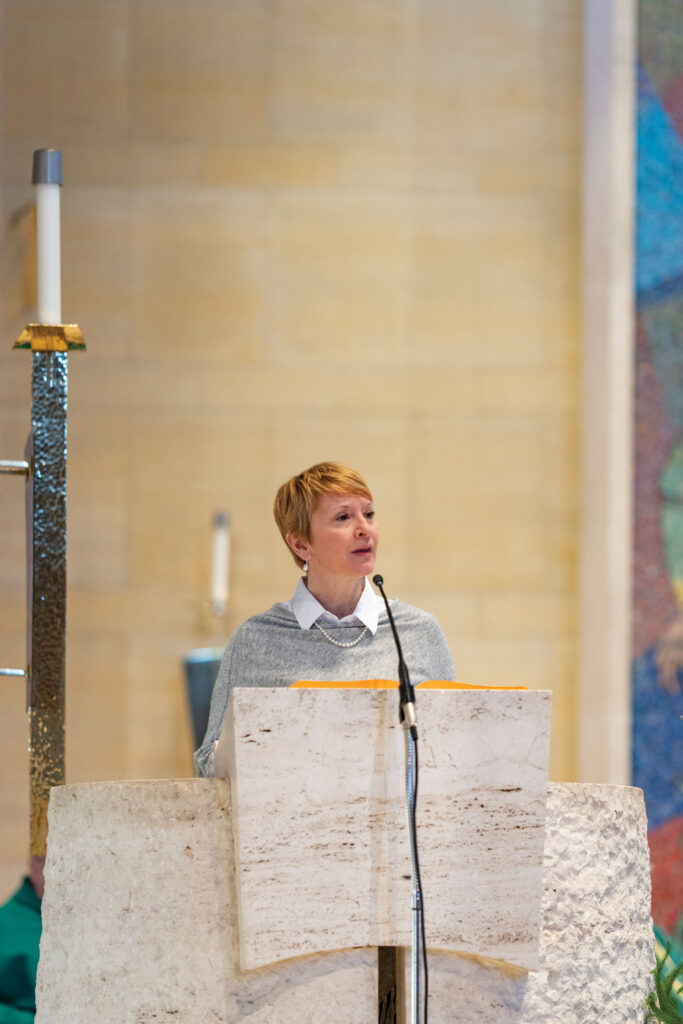
The platform on which the ambo sits was expanded as an enhanced safety measure. The ambo is the place from which the Scriptures are read and the homily is delivered.
THE CANTOR STAND
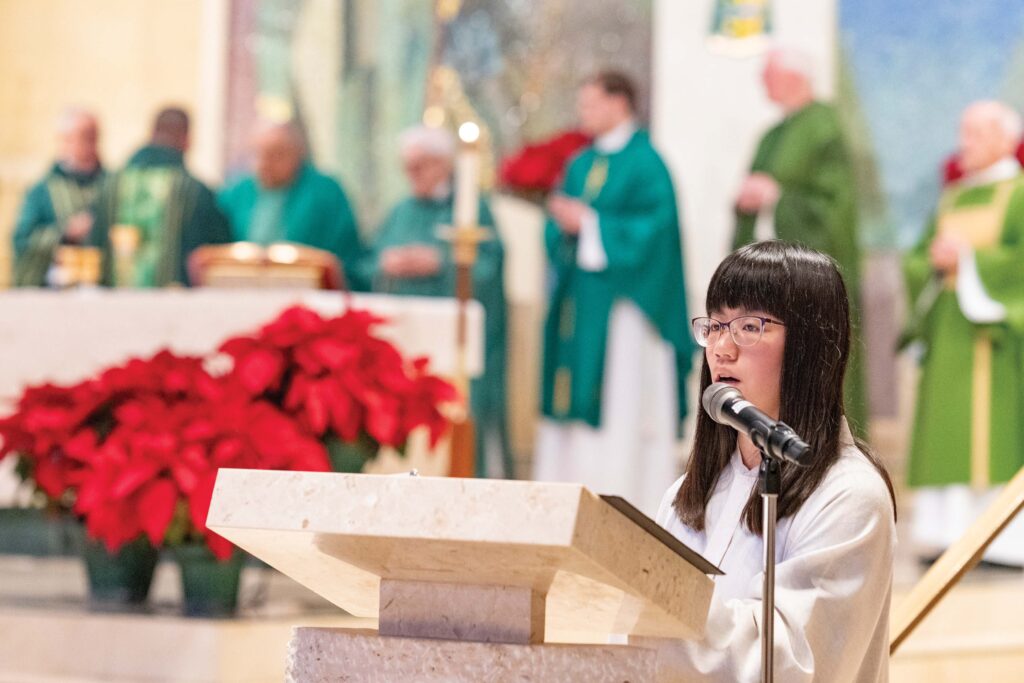
Marble from the former side altars was also used to create a new cantor stand. The previous stand was made of wood, but the new marble stand blends more effectively with the design of the other appointments in the sanctuary, including the cathedra, ambo and altar.
MOSAIC REFURBISHMENT
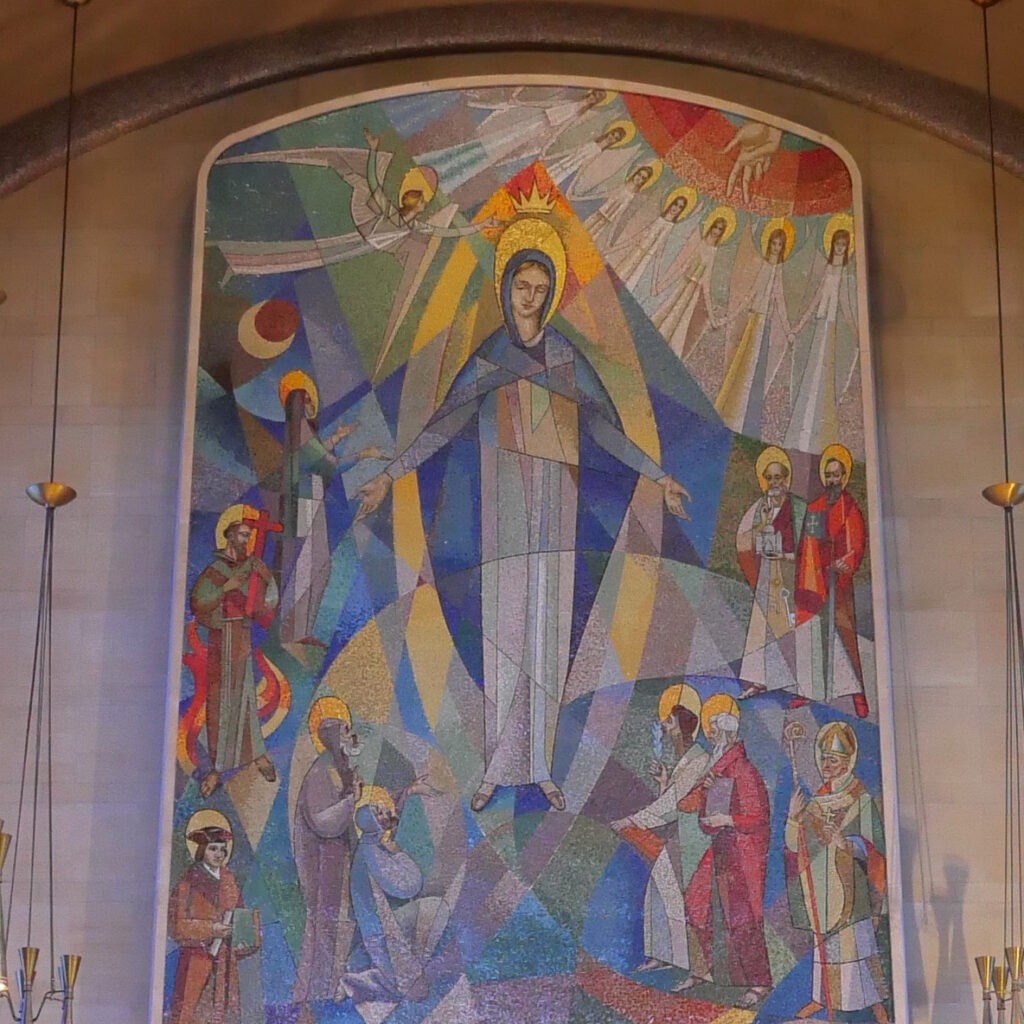
The stunning glass mosaic behind the altar that stretches all the way to the cathedral’s ceiling was cleaned and restored. Depicted in the center of the mosaic is the Blessed Mother of God, being touched by Gabriel, the angel of the Annunciation.
The mosaic also pays homage to the ethnic roots of the faithful of the Diocese of Youngstown at the time the cathedral building was dedicated in 1958. Represented in the mosaic to Mary’s right are: Saint Frances Xavier Cabrini (Italian), Saint Nicholas Tavilic (Croatian), Saints Maron and Nicetas (representing Maronite and Romanian Rites), Saint Thomas More (English), Saint Martin de Porres (representing Black and Hispanic communities), Saint Patrick (Irish) and Saint Casmir (Polish and Lithuanian). To her left are Saints Peter and Paul (symbolizing the early Church), Saint Boniface (German), Saints Cyril and Methodius (Slavic), Saint Stephen (Hungarian), Saint Louis (French) and Saint Stanislaus (Polish).
ACCENT COLORS
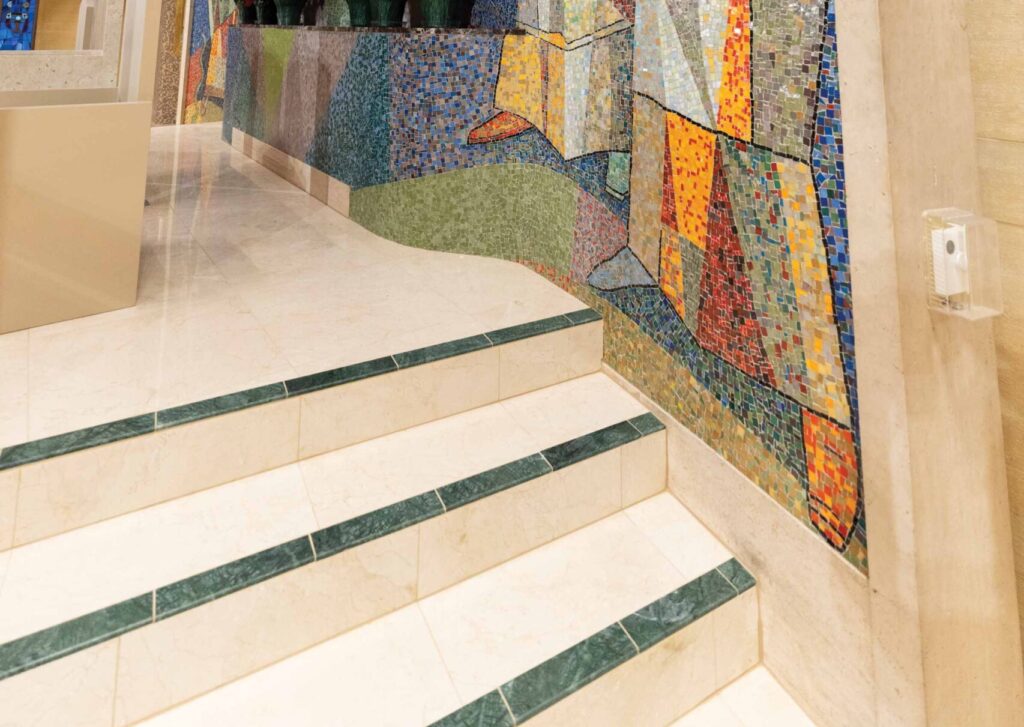
Green tiles were added to the floor in many locations around the altar, to complement the stunning mosaic on the wall behind the altar.
THE REMOVAL OF THE SIDE ALTARS
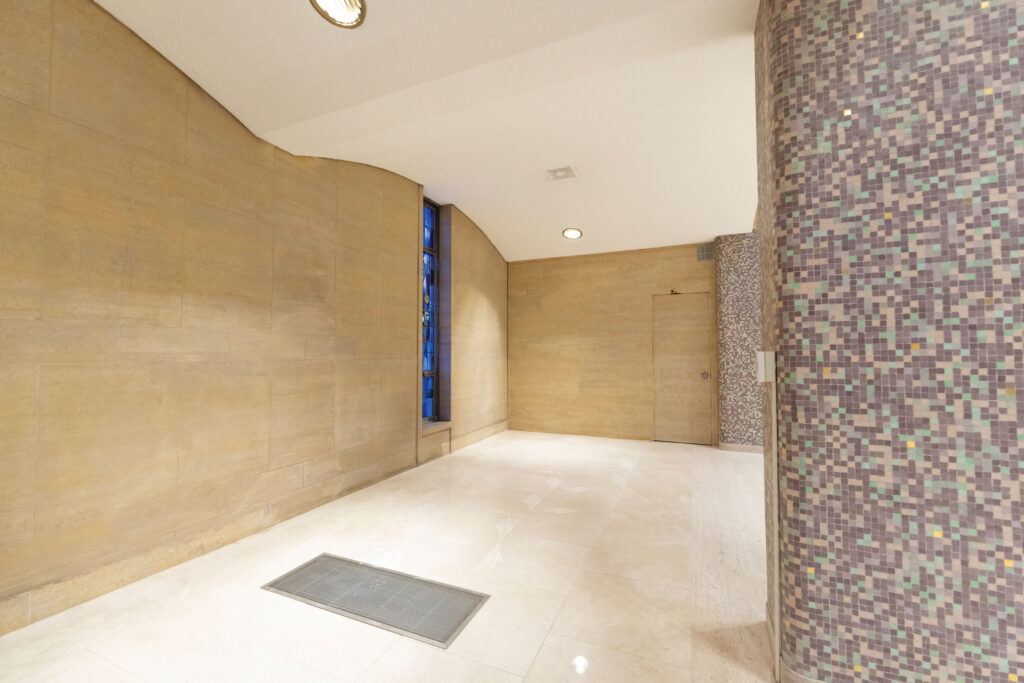
The side altars, which had not been used for many decades due to reforms of the Second Vatican Council, were removed. The marble from the altars was repurposed to create the new cathedra and cantor stand.
ALTAR IMPROVEMENTS
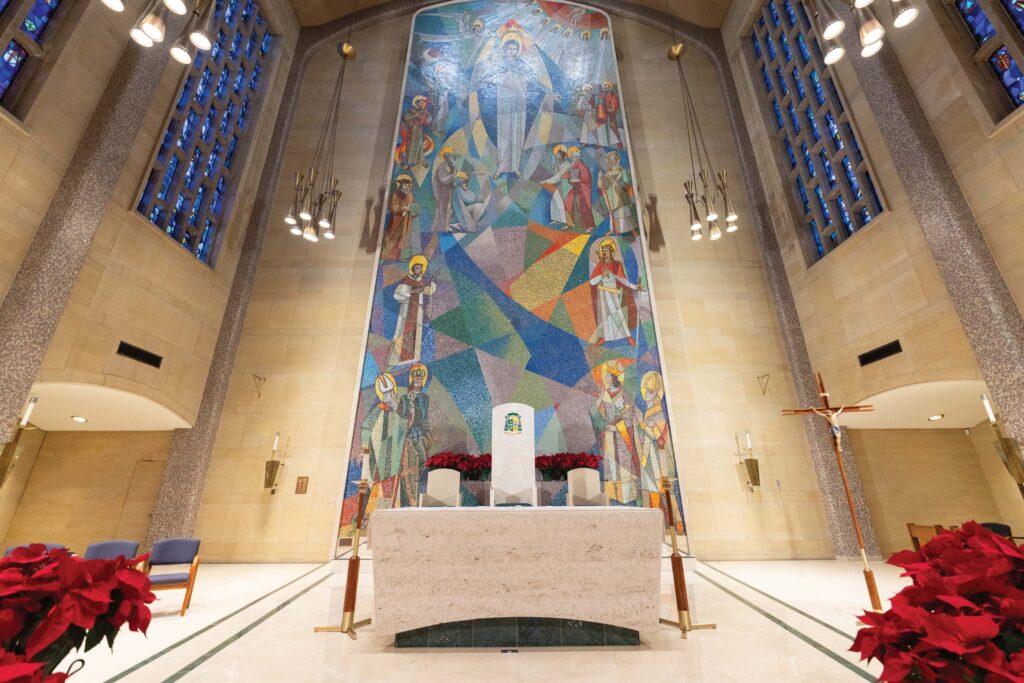
The altar will be elevated to meet regular height standards, with the addition of a new marble mensa (tabletop). To accommodate the taller, heavier altar, the floor beneath the altar was reinforced with steel beams. The six wall sconces around the altar were repolished and repaired.
THE PROCESSIONAL CROSS
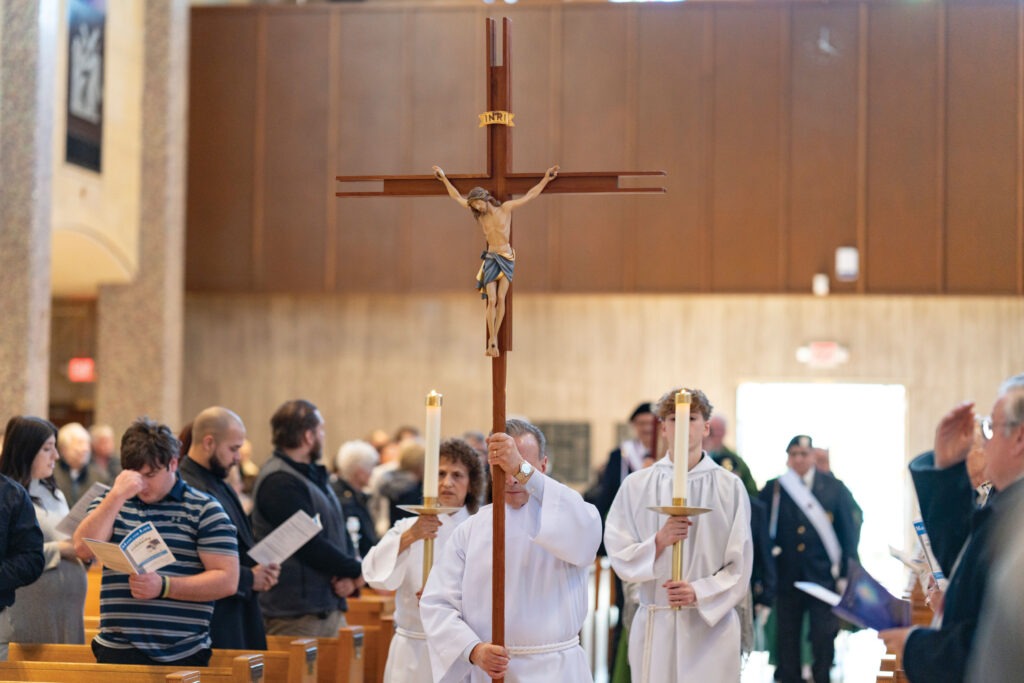
Refashioned, the processional cross was one of the first pieces to be completed in 2023. The old diocesan logo was removed from the cross, which received a thorough cleaning and restoration, and a corpus of Jesus was added.
MOSAIC LIGHTING
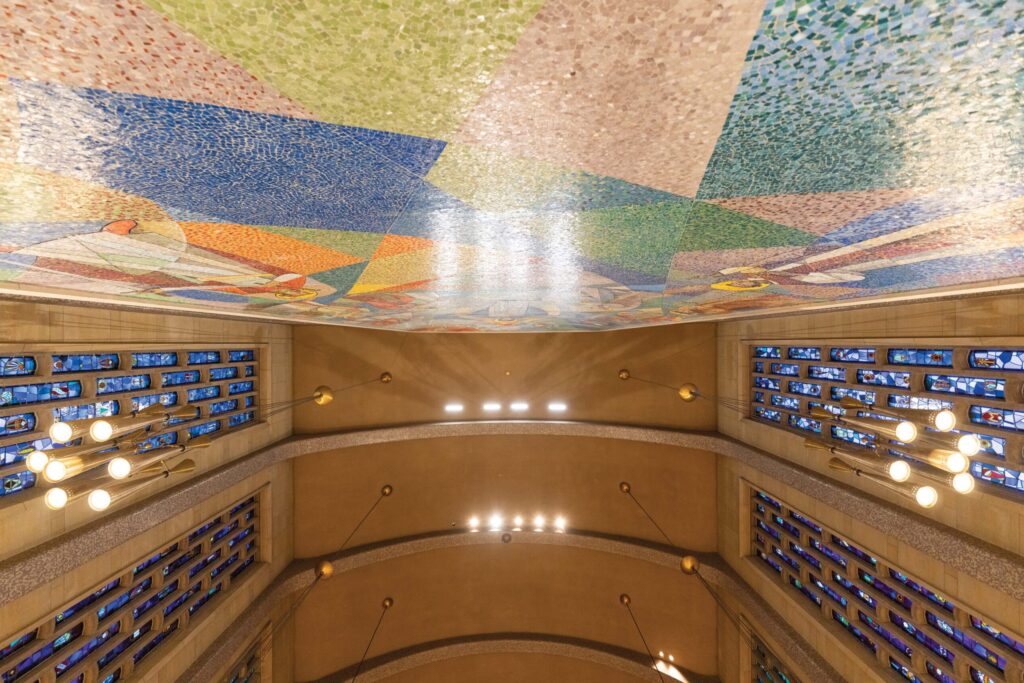
Lighting was installed in the ceiling to enhance the mosaic and accentuate its prominence as a work of art.
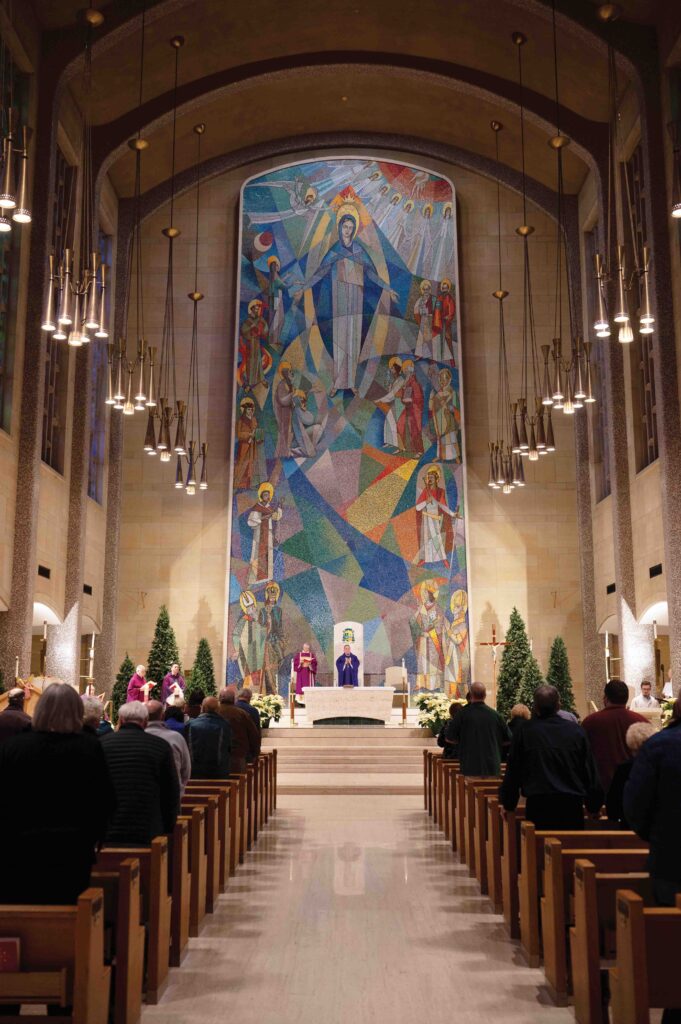
Bishop Bonnar blessed the newly renovated sanctuary space in St. Columba Cathedral at the 4 p.m. Mass on December 23. Since the publication of this issue in early February, other finishing touches were added to the sanctuary, including a new priest presider chair and deacon chairs and audio/visual improvements throughout the space. Hand rails have been added at the altar, and signage will also be installed on the façade of St. Columba Cathedral in the coming months.
Tune in to The Catholic Echo Podcast on Sunday, March 3, to hear about the renovations at St. Columba Cathedral. Interviewees include Bishop David Bonnar, Monsignor Robert Siffrin, rector at the cathedral, and Monsignor David Rhodes.
